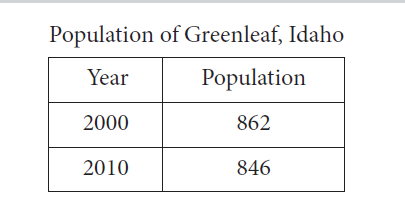Population is
All animals of an area
All plants of an area
All plants and animlas of an area
All individuals of a species.
The correct Answer is:D
To answer the question "Population is," we need to analyze the given options and understand the definition of a population in ecological terms.
1. Understand the Definition of Population:
- A population refers to a group of individuals of the same species that live in a specific area at the same time.
2. Evaluate the Options:
- Option A: All animals of an area: This option is too broad as it includes different species of animals, not just one species.
- Option B: All plants of an area: Similar to option A, this includes various species of plants, not a specific species.
- Option C: All plants and animals of an area: This option combines both plants and animals, which again does not refer to a single species.
- Option D: All individuals of a species: This option correctly defines a population as it refers specifically to individuals of one species in a given area.
3. Conclusion:
- Based on the definitions and evaluations of the options, the correct answer is Option D: All individuals of a species.
Final Answer:
Population is D. All individuals of a species.
---
- A population refers to a group of individuals of the same species that live in a specific area at the same time.
- Option A: All animals of an area: This option is too broad as it includes different species of animals, not just one species.
- Option B: All plants of an area: Similar to option A, this includes various species of plants, not a specific species.
- Option C: All plants and animals of an area: This option combines both plants and animals, which again does not refer to a single species.
- Option D: All individuals of a species: This option correctly defines a population as it refers specifically to individuals of one species in a given area.
- Based on the definitions and evaluations of the options, the correct answer is Option D: All individuals of a species.
Population is D. All individuals of a species.
Topper's Solved these Questions
- ORGANISMS AND THE ENVIRONMENTBOOK - DINESH PUBLICATION ENGLISHCHAPTER - ORGANISMS AND THE ENVIRONMENTEXERCISE - RQ
244 Videos
- ORGANISMS AND THE ENVIRONMENTBOOK - DINESH PUBLICATION ENGLISHCHAPTER - ORGANISMS AND THE ENVIRONMENTEXERCISE - CYG
17 Videos
- NO IDEABOOK - DINESH PUBLICATION ENGLISHCHAPTER - NO IDEAEXERCISE - Brain Teasers
37 Videos
- ORIGIN OF LIFE BOOK - DINESH PUBLICATION ENGLISHCHAPTER - ORIGIN OF LIFE EXERCISE - All Questions
201 Videos
Similar Questions
Knowledge Check
The age structures of a population influences population growth because
Ayounger females have more offsprings than do older femalesBdifferent ae groups have different reproductive capabilitiesCmore is the number of immature individuals, slower is the growth of populationDa shorter generation time results is slower population growth.A town's population rose
40% from 2006 to 2007.
The 2007 population was 10,080.
Quantity AQuantity BThe 2006 population7,000AQuantity A is greater.BQuantity B is greater.CThe two quantities are equal.DThe relationship cannot be determined from the infromation given.
Population of Greenleaf, Idaho

The table above shows the population of Greenleaf, Idaho, for the years 2000 and 2010. If the relationship between population and year is linear, which of the following functions P models the population of Greenleaf t years after 2000?
View SolutionPopulation Interaction
View SolutionPopulation density is the
View SolutionPopulation means
View SolutionIn a population showing sigmoid growth form, the population has reached its carrying capacity. What will be the value of d N/dt in this population.
View SolutionAssertion: Population ecology is a link of ecology to population genetics and evolution.
Reason: Natural selection operates at population level to evolve the desired traits.
View Solution
